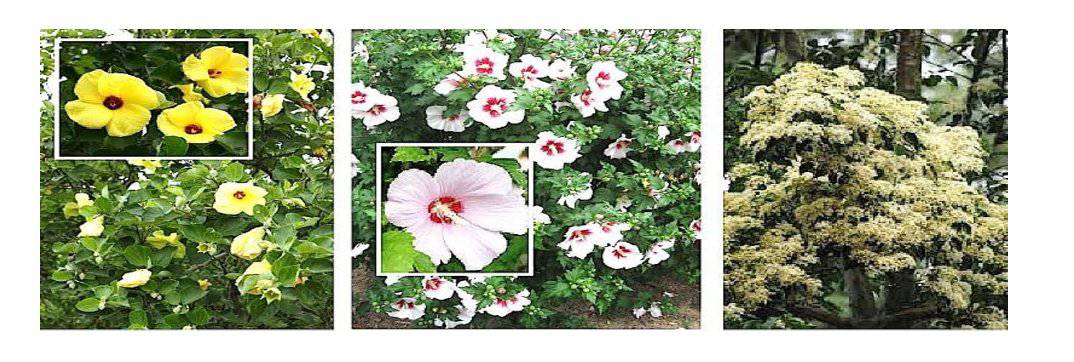By Dr. Dave Creech, Stephen A. Austin State
I’ve been wandering around China since 1997 as part of several collaborative projects with the Nanjing Botanical Garden. I’ve been asked many times why are you going to China all the time? Well, that’s easy. Most of my work in China puts a focus on Taxodium (Baldcypress) breeding and improvement with Professor Yin Yunlong and his team and the development of a blueberry industry in China with Professor Yu Hong and her team. This July I head to Shenzhen for the International Botanical Congress where I moderate a session and present a paper on our salt tolerance research at our Moody Gardens research plot. Just the opportunity to connect with so many scientists across a wide range of Horticulture makes it all worthwhile.

Hibiscus syriacus , center, can be grafted on Hibiscus hamabo, left, to increase saltwater tolerance. Right, Cornus wilsoniana is a Chinese dogwood with beautiful bark and large flowers
The research environment in China is different. Instead of facing massive cuts in both state and national funding, the reverse is true. It’s no secret that China is investing heavily in science at both the provincial and central government level. There are new buildings everywhere. The labs are packed with very high tech instrumentation. There are PhD’s under every rock and research teams are tackling exciting new challenges at every turn. Let’s face it; any casual stroll through the science journals of the world reveals that China has upped their game.
The IBC2017 conference ( http://www.ibc2017.cn/) features a global list of participants who lead their respective fields, whether it’s genomic work, plant physiology or dealing with climate change impacts on botanical diversity, this conference has it all. I’ve attended conferences before in China and let’s just say they’re dramatic.
I don’t think anyone will argue that most science conferences in the USA are a bit bland. It’s speaker after speaker, up for the requisite 15 to 20 minutes to present their research. Sure, there’s great value in co-mingling with like-minded researchers and developing that important social/professional network, but science conferences in the USA are not all that exciting.
The top conferences in China are the opposite and include elaborate banquets with outrageous entertainment and plenty of toasting. The pre and post conference tours are to die for. It’s something to look forward to. So, how does this benefit Texas? Well, there’s a wealth of plant materials. Even though it’s harder than ever to move Chinese plant material into the USA, it can be done with the proper permitting and protocols.
The introduction of bald cypress hybrids (Montezuma cypress X Bald cypress) with alkalinity and salt tolerance, no knees and a fast growth rate is surely a good thing. Even though this a native-to-the-USA woody, it’s China that has implemented controlled crosses and selection from massive seedling fields. Let’s not forget that China is home to many genera popular in the USA market.
My latest excitement is Cornus wilsoniana, a really cool Chinese dogwood with beautiful bark and large flowers. Learning that Hibiscus syriacus can be grafted on H. hamabo means that the popular Althaea may be grown in environs with saltier soils is possibly a breakthrough Texas coastal residents. Our work at SFA Gardens has led to the first crops of Golden Kiwifruit, Actinidia chinensis, and a China connection, after two years of USDA quarantine, promises seven new varieties with heat tolerance and better adaptation to Texas. China and the USA share similar climactic zones and the same kind of challenges. By working together we can both plan and plant for a better world!
* Dr. David Creech can be contacted at: dcreech@sfasu.edu or through his “Life on the Green Side” blog

